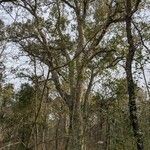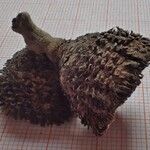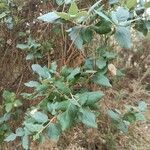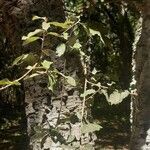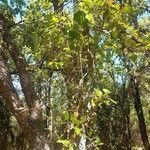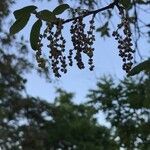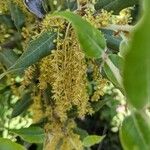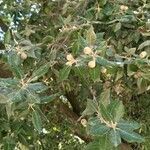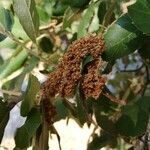A medium sized tree. It grows to 20 m high. The branches are gnarled. The bark is thick and grey and has long cracks. The leaves are alternate and have spine tipped lobes. They are oval and 7 cm long by 4 cm wide. They are dark green on top and white underneath. The female flowers appear on young grey-green shoots. The acorns are in a loose shallow cup. They are 3 cm long.
Perennial tree, up to 20 m high, with thick, corky bark. Leaves evergreen, ovate-oblong, dark green above, grey-hairy beneath, base tapered, margins with several bristle-tipped teeth. Acorn ovoid-oblong, 15-30 mm long, cup with the uppermost scales long and spreading, the lower appressed.

